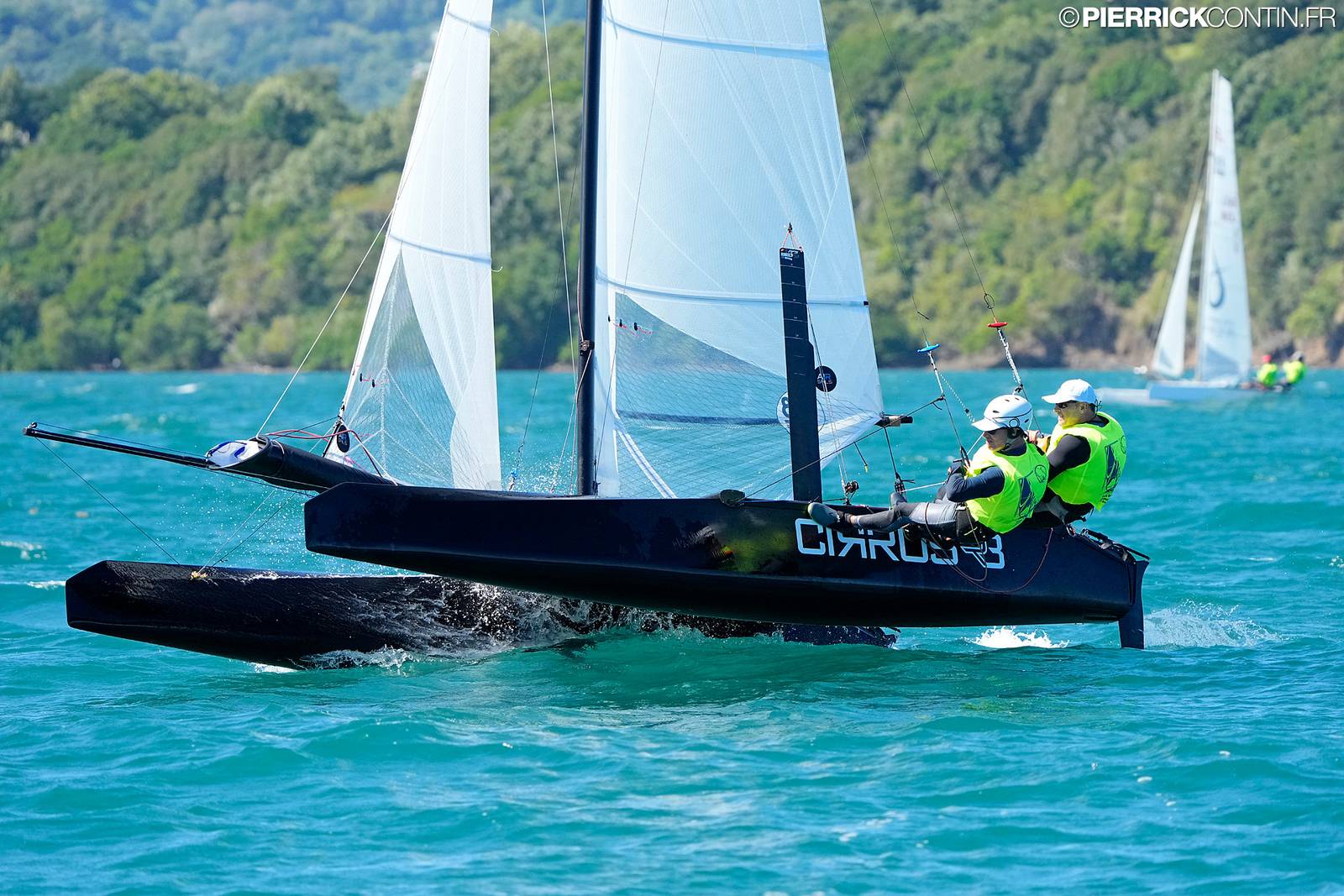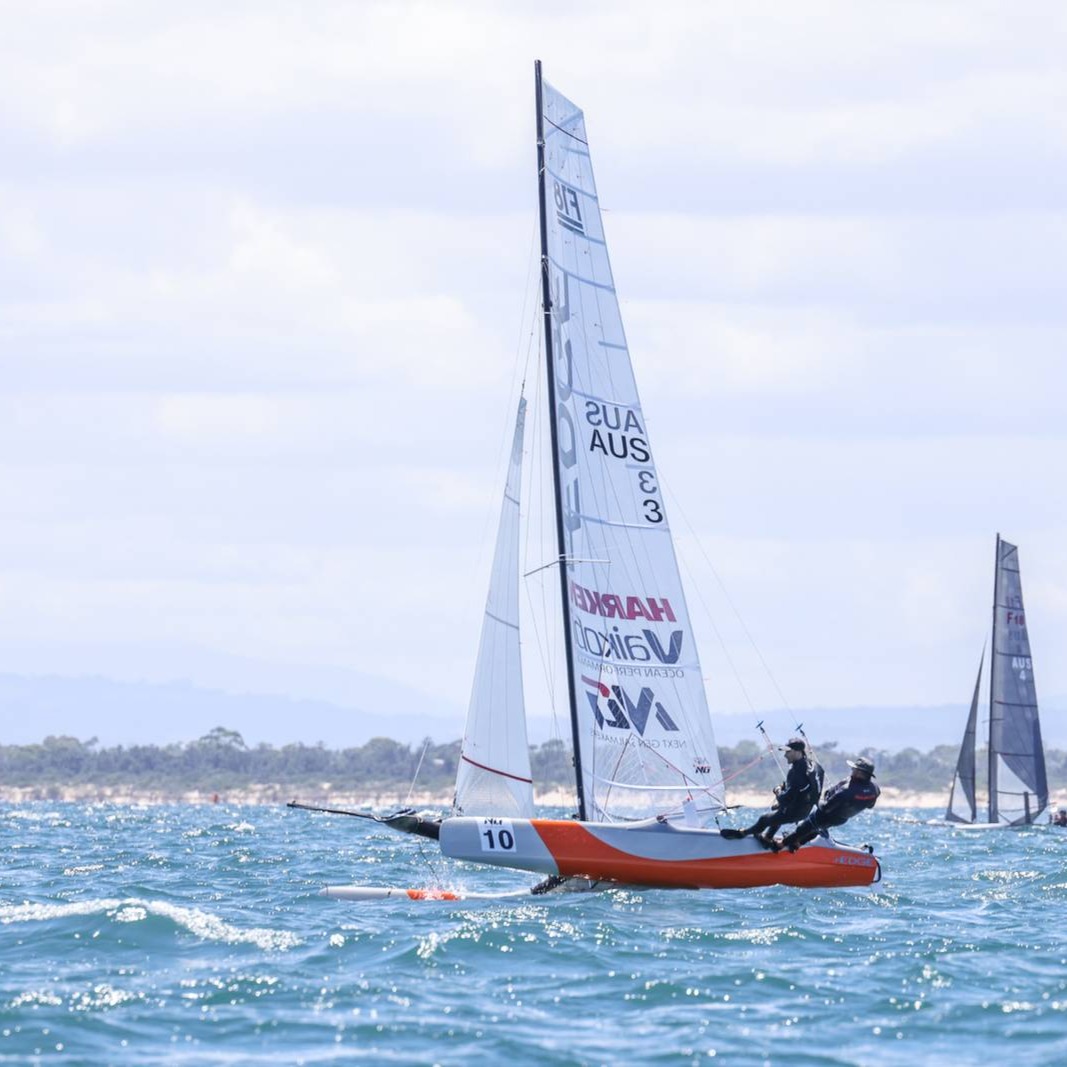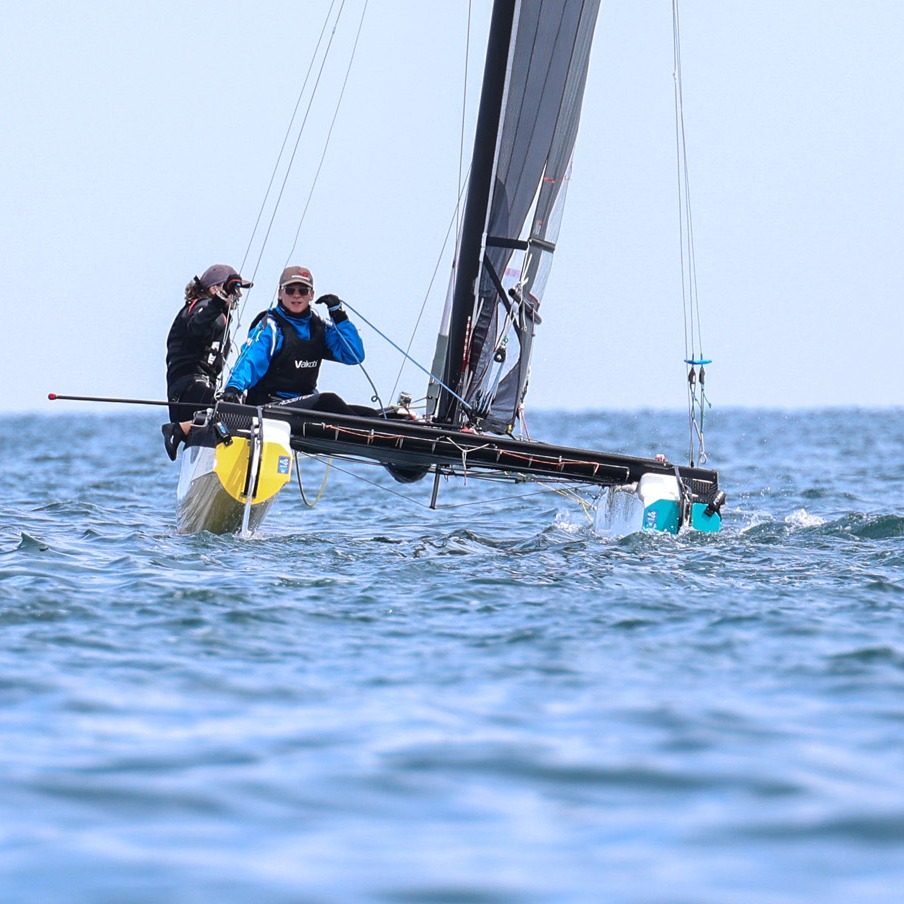AC35: Team New Zealand AC50 Cycling explained by Mike Drummond
Image: Team New Zealand press. – Time to ask the Pros about TNZ cycling systems benefits and there is few people more indicated to write about AC devels than Mike Drummond. If you still don´t know his cv, read it here as told by Coutts (One day I need to re publish that text, maybe the best presentation speech ever)
——————-
Mike Drummond on Team New Zealand cycling system and previous similar developments:
“It’s a good bet that every team has investigated leg power this time. They will already know the tradeoffs and I’d be surprising if anyone scrambled to change immediately. Perhaps the bigger advantage is there might be potential to sail the boat differently. For example, the cyclists have their hands free, so they could be doing other jobs – perhaps controlling wing twist to match real-time aero targets. (I suggested Jimmy steer the AC72 from a bicycle seat so he could grind and steer. I got a very short answer)
Manual grinding vs Cycling , the differences this time;
– The rotary hydraulic pump is automatically changing gears so the pedals are always rotating forwards. (Whereas winches change gear by reversing the handle direction)
– Accumulators are now used to store pressure which can be used later when power requirements peak during a tack say. This allows the grinders to work more steadily.
– The AC50 is short of manpower, so any increase will result in better boatspeed because the wing and foils can be trimmed more frequently. This allows more precise sailing and faster foil designs – which need more frequent adjustment.
– The brief video of a tack shows 2 grinders being seated and cycling at different times, so maybe there are individual clutches so they don’t have to coordinate joining with spinning pedals?
In 1977 12m Sverige used leg-power with grinders belowdecks. Later, rules had the grinders on deck, and seated grinding was seen as too difficult because crew had to move around the boat. Many jobs started with very high speed and finished with very high load, which suits arm power.
Also, generally there was sufficient manpower and usually plenty of recovery time so there was no compelling need for a new system. (Although a grinder on KZ7 told me he fell asleep on the pedestal very briefly between tacks in a ~50 tack duel with Stars & Stripes in 1987)
–
I asked him also on AC Foil sets availability:
CSN: I checked with Pete Melvin if rules allows to change the 2 sets of foils according to wind conditions (if they are different designs of course) and he said his view based on the protocol is they can use both sets. Now what would you do? Have two diff designs or a spare one?
Mike Drummond: “I would use two different designs because it pays to be fast! Slow foils with a spare set probably guarantee a loss (at the least you’re relying on your opponent having problems in multiple races); whereas fast foil sets might not break.”
——-
——-































I just heard that my great sailing friend and former CEO of Hobiecat Europe has passed. May The endless oceans…
...Report was sent by an F18 Sailor, if you want Hobies reported send your own, we'll publish as usual. Cheers.
Looks like in your report the Hobies are not really present. Suggest to rewrite the article.
Thanks for the great report Wik. Great battle.
If I correctly read the results the overall winner this year is a Hobie16